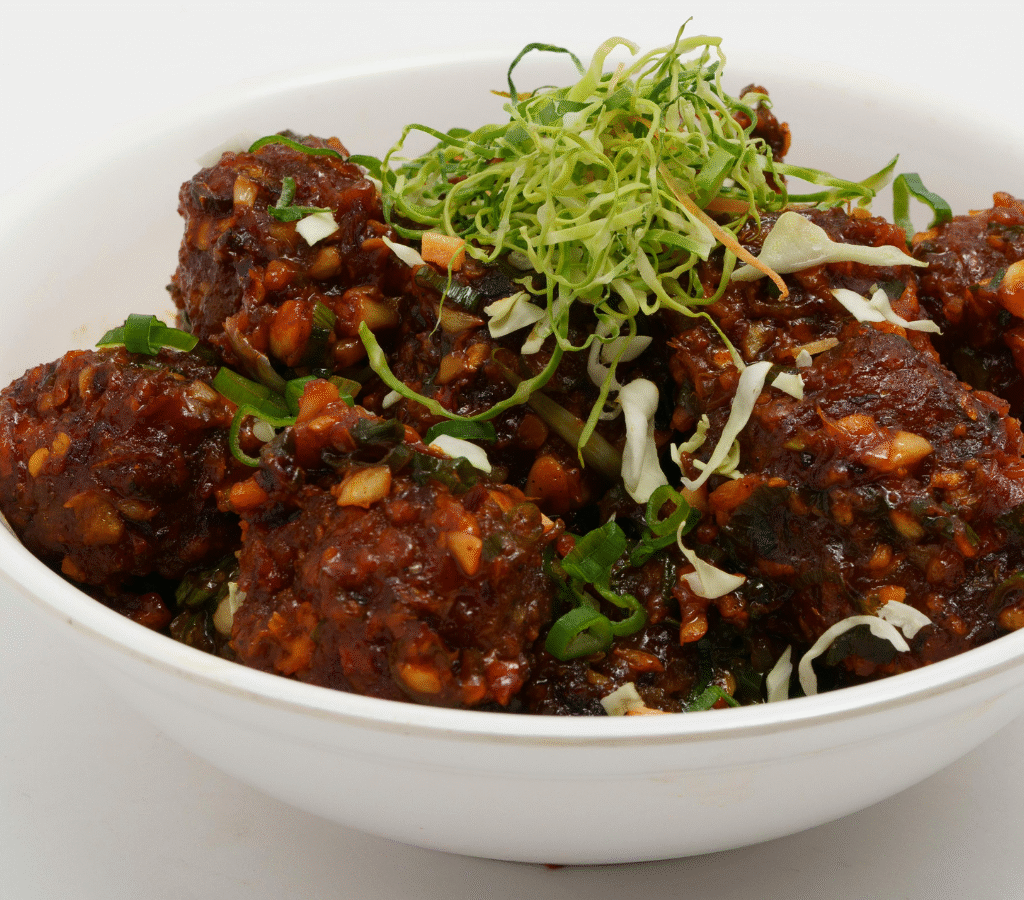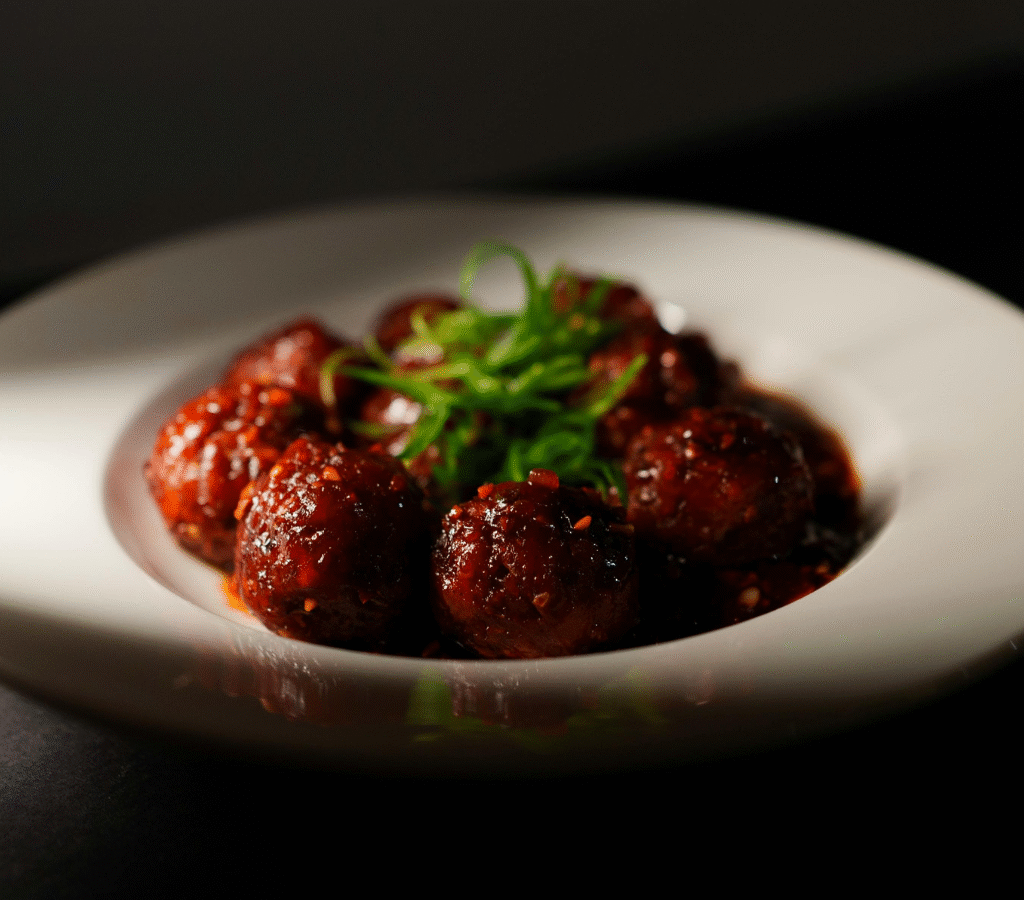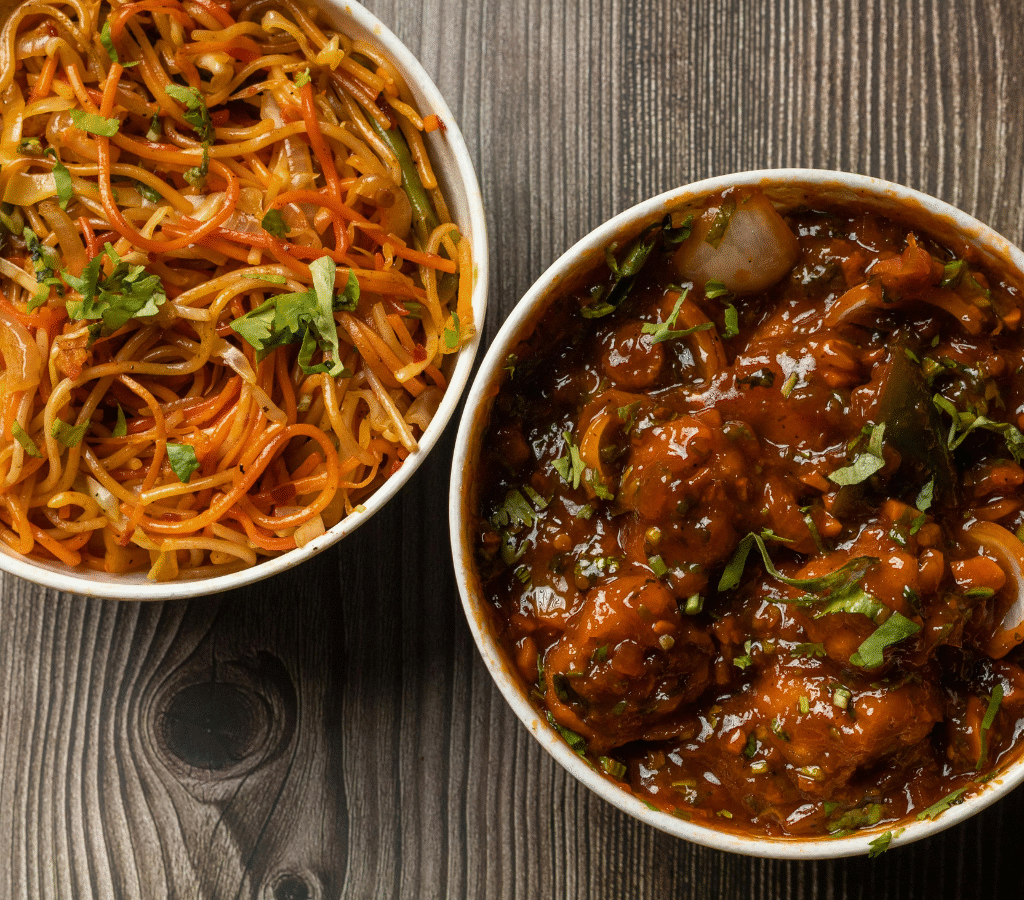Few dishes capture the essence of Indo-Chinese cuisine quite like Manchurian. With its bold flavors, tantalizing aroma, and crispy-yet-juicy texture, this dish has become a staple in Indian restaurants, street food stalls, and home kitchens alike. Manchurian, whether served dry as a starter or with gravy as a main course, represents the perfect fusion of Chinese cooking techniques with Indian spices and creativity.
In this article, we’ll dive deep into the origins of Manchurian, the essential ingredients, step-by-step methods, and helpful tips to perfect the recipe at home. By the end, you’ll not only know how to prepare delicious Manchurian but also understand the cultural significance and the many variations that make it so popular.
The Origins of Manchurian
Although the name suggests a link to the Manchuria region of China, Manchurian as we know it is not an authentic Chinese dish. Instead, it is a creation of the Indo-Chinese culinary movement, which started in the mid-20th century in Kolkata, India. Chinese immigrants in India, primarily from Cantonese and Hakka communities, adapted their traditional recipes to suit Indian taste buds, which favor spicier, tangier, and more robust flavors.
Chef Nelson Wang is often credited with inventing Chicken Manchurian in the 1970s at a Mumbai restaurant. He combined soy sauce and garlic with Indian spices and chili, creating a dish that quickly gained fame. Over time, the dish evolved to include vegetarian versions such as Veg Manchurian (using cabbage, carrot, beans, and cauliflower) and even more modern twists like Paneer or Mushroom Manchurian.

Today, Manchurian is one of the most beloved Indo-Chinese dishes, found everywhere from upscale restaurants to college canteens.
Types of Manchurian
Before learning the recipe, it’s important to know the two primary styles:
- Dry Manchurian – This version is crispier and usually served as an appetizer or starter. The Manchurian balls or fried pieces are tossed in a thick, spicy sauce coating without much gravy. It’s a favorite party snack and pairs well with fried rice or noodles.
- Gravy Manchurian – In this variation, the fried Manchurian balls are simmered in a flavorful sauce with more liquid content, making it suitable as a main course with rice, noodles, or even roti.
Both versions share the same base ingredients, with slight adjustments in the sauce’s consistency.
Ingredients Required for Manchurian
The beauty of Manchurian lies in its simplicity. Most ingredients are easily available in any Indian or Asian kitchen. Here’s what you’ll need:
For the Manchurian Balls:
- Vegetables: Finely chopped or grated cabbage, carrots, beans, and capsicum (optional cauliflower or spring onion greens).
- Binding agents: All-purpose flour (maida), cornflour, or sometimes bread crumbs to hold the mixture together.
- Seasonings: Salt, black pepper, ginger-garlic paste, green chili (optional).
- Oil: For deep frying.

For the Sauce/Gravy:
- Oil: Preferably vegetable oil with a neutral flavor.
- Garlic and Ginger: Finely chopped for that signature Indo-Chinese aroma.
- Onion and Spring Onions: Adds crunch and sweetness.
- Capsicum (Bell Pepper): For texture and flavor.
- Soy Sauce: The backbone of the sauce.
- Chili Sauce: For spice.
- Tomato Ketchup: To balance with a hint of sweetness.
- Vinegar: For tanginess.
- Cornflour slurry: Cornflour mixed with water to thicken the sauce.
- Salt, pepper, optional MSG (Ajinomoto): Seasonings to enhance taste.
Read also: How to make khaman Dhokla?
Step-by-Step Recipe for Veg Manchurian
Here is a detailed method to prepare Veg Manchurian at home.
Step 1: Preparing the Vegetables
- Wash and finely chop or grate the vegetables (cabbage, carrots, beans, capsicum). The finer the chop, the easier it is to bind.
- Squeeze out excess water from vegetables if they release too much moisture. This helps in shaping firm balls.
Step 2: Making the Manchurian Balls
- In a large mixing bowl, add the chopped vegetables.
- Add 2–3 tablespoons of all-purpose flour and 1–2 tablespoons of cornflour.
- Season with salt, pepper, and a teaspoon of ginger-garlic paste.
- Mix well. The mixture should be slightly sticky but not watery. If it’s too wet, add more flour.
- Shape the mixture into small round balls using your palms.
Step 3: Frying the Manchurian Balls
- Heat oil in a deep frying pan or wok.
- Gently drop the balls into the hot oil. Fry on medium heat until golden brown and crisp.
- Remove and drain on tissue paper to absorb excess oil.
- For a healthier version, you can air-fry or bake the balls, though the texture will differ slightly.
Step 4: Preparing the Sauce
- Heat 2 tablespoons of oil in a wok.
- Add finely chopped garlic, ginger, and green chili. Sauté for a minute until fragrant.
- Add chopped onions and capsicum; stir-fry on high heat for 2–3 minutes to retain crunch.
- Add soy sauce, chili sauce, tomato ketchup, and vinegar. Mix well.
- Season with salt and pepper.
- Add 1 cup of water (for gravy version) or just a few tablespoons (for dry version).
- Prepare a slurry with 1 tablespoon cornflour and 3 tablespoons water. Add to the sauce. Stir continuously until the sauce thickens.
Step 5: Combining the Manchurian
- For dry Manchurian: Toss the fried balls in the thick sauce until coated evenly. Serve hot as a starter.
- For gravy Manchurian: Add the fried balls into the sauce and simmer for 2–3 minutes. Garnish with spring onion greens and serve with rice or noodles.

Tips for Perfect Manchurian
- Chop vegetables finely – This ensures better binding and texture. A food processor can be handy.
- Right oil temperature – Fry the balls on medium heat. Too hot, and they’ll burn outside while staying raw inside; too low, and they’ll absorb oil.
- Cornflour slurry consistency – Add gradually to avoid making the sauce too thick.
- Balance flavors – Indo-Chinese food thrives on a balance of spicy, tangy, salty, and slightly sweet. Adjust sauces to your taste.
- Serve immediately – Manchurian tends to lose crispiness over time. Serve hot for the best experience.
Variations of Manchurian
Manchurian has many delicious variations to suit different preferences:
- Chicken Manchurian – Boneless chicken pieces replace vegetable balls, marinated, fried, and then simmered in the sauce.
- Paneer Manchurian – Cubes of paneer are fried or shallow-fried, then tossed in the sauce. Popular among vegetarians.
- Mushroom Manchurian – Whole or halved mushrooms are used instead of balls.
- Gobi Manchurian – Crispy cauliflower florets coated in batter and fried, then tossed in sauce. A street-food favorite.
- Baby Corn Manchurian – Baby corn is deep-fried and coated in sauce.
- Healthy Manchurian – Air-fried or baked versions for health-conscious eaters.
Serving Suggestions
Manchurian pairs beautifully with other Indo-Chinese dishes. Some popular accompaniments include:
- Fried Rice (Veg, Egg, or Chicken)
- Hakka Noodles
- Schezwan Rice or Noodles
- Steamed Rice
- Even Indian breads like naan or roti in fusion meals
The Cultural Popularity of Manchurian
In India, Manchurian is more than just food—it’s an emotion. College students often bond over a plate of hot Gobi Manchurian from a roadside stall. Families order it at restaurants to begin their meal. Home cooks experiment with healthier versions. It has transcended its roots and become a comfort food for millions.
Its adaptability, affordability, and bold flavors have made it a universal crowd-pleaser. No party menu or Indo-Chinese buffet is complete without it.
spicy sauce
Conclusion
Making Manchurian at home is not only rewarding but also surprisingly simple once you know the process. From finely chopping vegetables to frying golden balls and simmering them in a tangy, spicy sauce the dish brings together flavors that delight the senses. With practice, you can customize it to your preference—spicier, sweeter, dry, or with gravy.
This fusion masterpiece embodies the best of both Indian and Chinese cuisines and continues to hold a special place in our hearts and dining tables. So, the next time you crave something zesty, skip the takeout menu and prepare your own batch of delicious Manchurian at home.
